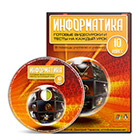Architecture computer
Computer architecture is a specification detailing how a set of software and hardware technology standards interact to form a computer system or platform. In short, computer architecture refers to how a computer system is designed and what technologies it is compatible with.
As with other contexts and meanings of the word architecture, computer architecture is likened to the art of determining the needs of the user/system/technology, and creating a logical design and standards based on those requirements.
There are three categories of computer architecture:
System Design: This includes all hardware components in the system, including data processors aside from the CPU, such as the graphics processing unit and direct memory access. It also includes memory controllers, data paths and miscellaneous things like multiprocessing and virtualization.
Instruction Set Architecture (ISA): This is the embedded programming language of the central processing unit. It defines the CPU's functions and capabilities based on what programming it can perform or process. This includes the word size, processor register types, memory addressing modes, data formats and the instruction set that programmers use.
Microarchitecture: Otherwise known as computer organization, this type of architecture defines the data paths, data processing and storage elements, as well as how they should be implemented in the ISA.In computer engineering, computer architecture is a set of rules and methods that describe the functionality, organization, and implementation of computer systems. Some definitions of architecture define it as describing the capabilities and programming model of a computer but not a particular implementation. In other definitions computer architecture involves instruction set architecture design, microarchitecture logic design, and implementation.
Computer organization
Main article: Microarchitecture
Computer organization helps optimize performance-based products. For example, software engineers need to know the processing power of processors. They may need to optimize software in order to gain the most performance for the lowest price. This can require quite detailed analysis of the computer's organization. For example, in a SD card, the designers might need to arrange the card so that the most data can be processed in the fastest possible way.
Computer organization also helps plan the selection of a processor for a particular project. Multimedia projects may need very rapid data access, while virtual machines may need fast interrupts. Sometimes certain tasks need additional components as well. For example, a computer capable of running a virtual machine needs virtual memory hardware so that the memory of different virtual computers can be kept separated. Computer organization and features also affect power consumption and processor cost.
Architecture of Computer System
Computer is an electronic machine that makes performing any task very easy. In computer, the CPU executes each instruction provided to it, in a series of steps, this series of steps is called Machine Cycle, and is repeated for each instruction. One machine cycle involves fetching of instruction, decoding the instruction, transferring the data, executing the instruction.
Computer system has five basic units that help the computer to perform operations, which are given below:
Input Unit
Output Unit
Storage Unit
Arithmetic Logic Unit
Control Unit

 Получите свидетельство
Получите свидетельство Вход
Вход












 Computer and architure (13.32 KB)
Computer and architure (13.32 KB)
 0
0 177
177 1
1 Нравится
0
Нравится
0



